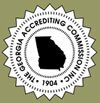The Great Pacific Garbage Patch: Understanding the Plastic Crisis
🌊 Our beautiful oceans cover more than 70% of the Earth's surface, providing us with a vast array of resources and supporting countless ecosystems. However, beneath the surface lies a growing menace that threatens this delicate balance: the Great Pacific Garbage Patch. This colossal accumulation of plastic debris in the Pacific Ocean has captured the world's attention, highlighting the urgency of our plastic crisis.
What is the Great Pacific Garbage Patch?
🏝️ The Great Pacific Garbage Patch, often referred to as GPGP, is not an island of trash as some might imagine. Instead, it is a vast area of the Pacific Ocean where plastic debris, large and small, is concentrated due to ocean currents. The majority of this plastic is not visible from the surface, making it a hidden threat to marine life.
🌍 The GPGP is divided into two main patches: the Western Garbage Patch, located between Hawaii and California, and the Eastern Garbage Patch, which lies between Hawaii and Japan. These patches are interconnected by a subtropical convergence zone, creating a continuous stretch of polluted waters.
Key Facts About the Great Pacific Garbage Patch
- 🚢 The GPGP covers an area estimated to be between 700,000 and 1.6 million square kilometers, making it larger than some countries.
- 🌊 It contains an estimated 80,000 metric tons of plastic, with a significant portion consisting of microplastics that can be harmful to marine life and ecosystems.
- 🦑 Marine animals often mistake plastic debris for food, leading to ingestion and potential harm to their health. This can also enter the human food chain through seafood consumption.
- 🌊 Plastic waste in the GPGP originates from various sources, including shipping, fishing, and coastal communities, carried by ocean currents to this accumulation zone.
- 🌍 Efforts to clean up the GPGP face numerous challenges, including the vast scale of the problem, logistical issues, and the continuous influx of new plastic waste.
The Environmental Impact
🐢 Plastic pollution in the Great Pacific Garbage Patch poses a significant threat to marine life. Sea turtles, seabirds, and marine mammals often become entangled in plastic debris or ingest it, leading to injury or death. The chemicals released by decomposing plastics can also harm aquatic ecosystems.
🌊 Beyond its immediate impact on marine life, the GPGP is a stark reminder of the broader plastic crisis. Single-use plastics, such as bottles, bags, and straws, make up a significant portion of this pollution. The persistence of plastics in the environment, taking hundreds of years to degrade, exacerbates the problem.
What Can We Do?
♻️ Addressing the Great Pacific Garbage Patch and the plastic crisis at large requires a concerted effort from individuals, governments, and industries. Here are some steps we can take:
- Reduce single-use plastics in your daily life.
- Participate in beach clean-up initiatives and support organizations dedicated to ocean conservation.
- Advocate for policies that promote recycling, waste reduction, and responsible plastic use.
- Support innovative technologies and research aimed at cleaning up and preventing plastic pollution.
- Spread awareness about the plastic crisis to inspire collective action.
🌍 The Great Pacific Garbage Patch serves as a stark reminder of the pressing need to address our plastic addiction. While the challenges are immense, our collective efforts can make a difference in preserving the health of our oceans and the planet.
|



